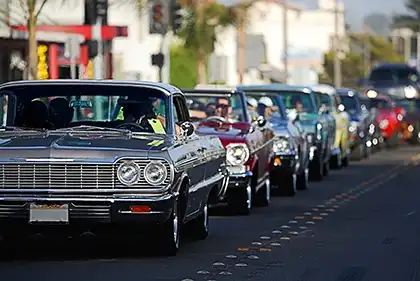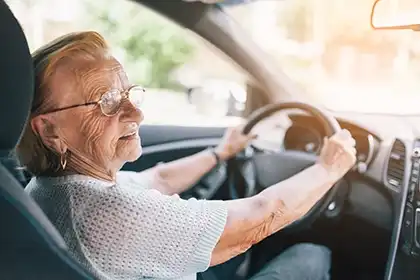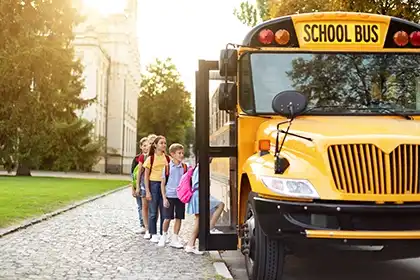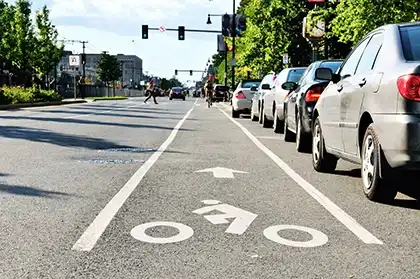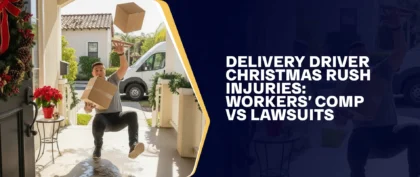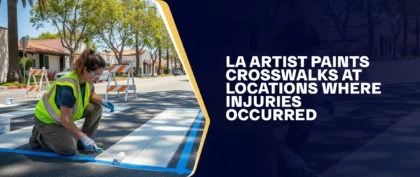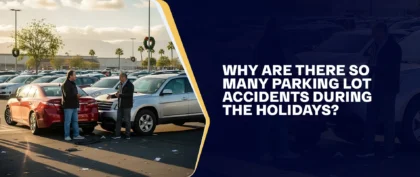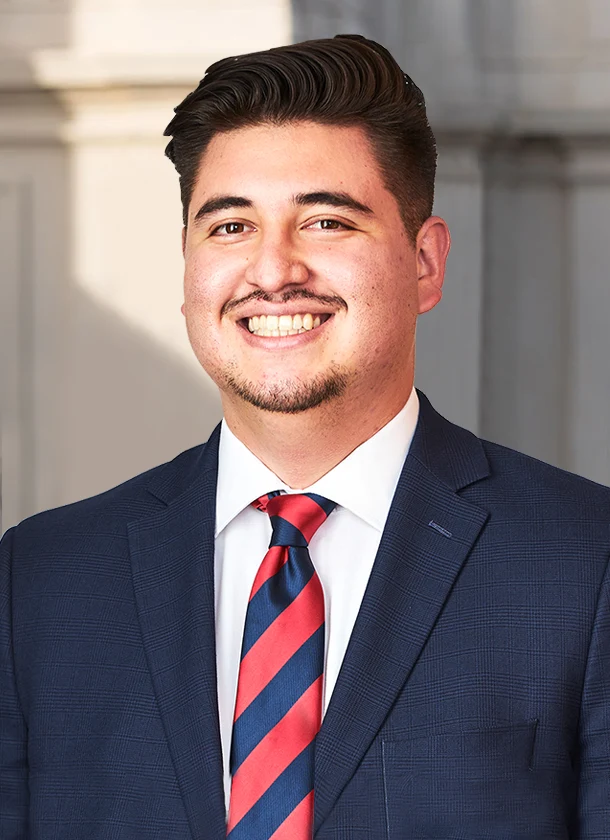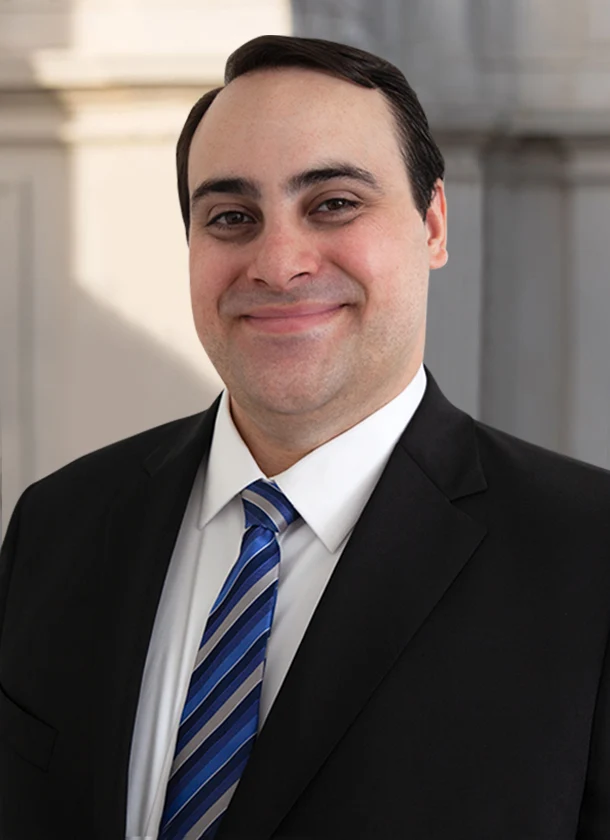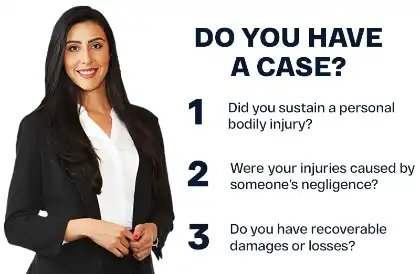Table of Contents
The year 2024 marks a significant shift in California’s traffic regulations. Over a dozen new traffic laws hit the road this year, affecting approximately 27 million drivers across the state.
These laws not only introduce new standards for officer-motorist interactions during traffic stops. They also pave the way for innovative safety programs designed to combat the escalating issue of pedestrian fatalities.
New California Laws About Driving In 2024
Here are some of the new California traffic laws set to take effect in 2024 that drivers need to know:
Speed Safety System Pilot Program For Vehicles
Signed into law by Governor Gavin Newsom on October 13, 2023, Assembly Bill 645 greenlights a five-year pilot program to curb traffic violations and improve pedestrian safety in six major cities.
The program authorizes deploying a limited number of speed detection cameras in strategically chosen areas with disproportionately high rates of speeding and pedestrian accidents. These areas include school zones, high-injury roads, and routes known for street racing.
Speeding violations detected by the cameras will incur civil penalties scaled to the severity of the offense. This consequence is exclusively a financial penalty. It will not result in license suspension or revocation, nor the addition of violation points against the driver.
Does The Speed Safety System Pilot Program Apply To All California Cities And Counties?
The five-year pilot program is limited to Los Angeles, Glendale, Long Beach, San Jose, Oakland, and the city and county of San Francisco. Upon the program’s completion, state and local authorities will evaluate its effectiveness, potentially paving the way for broader adoption throughout California.
What Is The Maximum Speed Limit In The California Driver Handbook?
California’s driver handbook outlines several maximum speed limits that drivers should adhere to based on the driving conditions and type of roadway. It also highlights specific situations when drivers need to reduce their speed.
Here’s a handy breakdown of the speed limits in the state:
- Most Highways — 65 mph unless posted otherwise.
- Two-Lane Undivided Highways — 55 mph, also applies to most vehicles towing trailers.
- School Zones — 25 mph, potentially lower near the school itself.
- Blind Intersections and Alleys — 15 mph.
- Railroad Crossings With Limited Visibility — 15 mph, unless controlled by gates, signals, or a flagman.
- Business or Residential Districts — Typically 25 mph unless posted otherwise.
Will Warnings Precede Tickets From Speed Cameras?
For the first 60 days, drivers in the six pilot cities will receive warnings — not tickets — for exceeding the speed limit. This grace period is implemented concurrently with a public information campaign to educate residents about the new program and the purpose of the cameras. After the initial 60 days, standard fines will apply to violations exceeding 11 mph over the posted limit.
How Will The Speed Safety System Pilot Program’s Effectiveness Be Measured?
The pilot program’s success will be assessed through a multi-pronged approach focused on quantifiable data and community impact. Key metrics include:
- Overall Speed — A reduction in the 85th percentile speed of vehicles at camera locations compared to pre-program data.
- Speeding Violations — A 20% reduction in vehicles exceeding the speed limit by 10 mph or more.
- Repeat Offenders — A 20% reduction in repeat violators at individual camera locations.
After a year, if traffic violation percentages do not reduce according to the above metrics, authorities may stop using the system or introduce further traffic calming measures.
Improved Visibility At Crosswalks And Intersections
Also referred to as the “Daylighting Law,” Assembly Bill 413 is one of the new traffic laws in California in 2024. Assembly Bill 413 tackles the issue of obstructed crosswalks by prohibiting parking within 20 feet of marked crossings and 15 feet where designated curb extensions exist.
Pedestrian accidents and intersection collisions are common in California. This “daylighting” strategy aims to improve visibility for both drivers and pedestrians at intersections and minimize the risk of collisions.
Are There Exceptions To The Assembly Bill 413 Parking Prohibition?
Some exceptions may apply depending on the situation. While the law prevents vehicles from parking within 20 feet of either side of a crosswalk, motorized scooters and bicycles are exempt from this restriction.
How Will The Daylighting Law Be Enforced Initially?
Although the law is active, citations for violations won’t be issued until 2025. Violations will result in warnings unless an area is specifically marked for enforcement with paint or signage. This grace period provides drivers and law enforcement officers enough time to adjust to the new regulations.
What Does Assembly Bill 413 Change?
Democratic Assemblyman Alex Lee, the bill’s sponsor, noted that a significant proportion of pedestrian-related accidents take place at crosswalks, especially within city limits. The new law is designed to cultivate a safer environment by preventing parked vehicles from obstructing the view of both pedestrians and motorists.
When Will The Daylighting Law Be Fully Enforced?
The law came into full force on January 1, 2024. Parking tickets cannot be written under Assembly Bill 413 until 2025 unless the curb is already painted red or signage indicates parking is prohibited. Nevertheless, cities within the state can issue warnings until 2024 under the law.
Vehicle Registration And Pretextual Stops
Assembly Bill 256 addresses concerns about “pretextual stops” and the financial burden of expired tag violations, which include tickets, license suspension, or towing.
A pretextual stop occurs when a police officer pulls over a vehicle under the pretext of a minor traffic violation to investigate a different, unrelated crime. Pretextual stops may disproportionately affect black and Hispanic motorists. It also often leads to unreasonably high costs for the driver and can, at times, escalate to the unnecessary use of force.
Additionally, Assembly Bill 256 will allow drivers to settle their vehicle registrations without incurring late fees up to 30 days following the initial due date. Beyond the second month of a tag’s expiration, late registration fees from the Department of Motor Vehicles (DMV) and enforcement actions will still be applicable.
License Renewal Alternatives For Senior Drivers
Sponsored by Assembly Member Mike Gipson, Assembly Bill 1606 proposes the expansion of options for driver’s license renewal in California. The bill authorizes the DMV Director to create a program assessing the impact of remote or virtual processing for license renewals on traffic safety and other aspects. This program complements the current in-person method of license renewal at the DMV.
Under the proposal, drivers over 70 could renew their licenses remotely, provided they pass a vision test. Additionally, the law would bar virtual or remote renewals for drivers who have already used this method twice consecutively for five years and for those aged 80 and above.
The law also includes critical security measures to prevent potential misuse, such as unauthorized individuals taking the test in place of the actual candidates. In addition, the DMV Director retains the discretion to suspend the remote or virtual renewal processes if needed.
Expired Registration Violations
Assembly Bill 925, like Assembly Bill 256, proposes changes for how officers or traffic enforcement officials handle violations concerning expired vehicle registrations. Existing laws already give law enforcement officers the authority to remove vehicles that have not complied with registration requirements, such as expired tags. Assembly Bill 925 introduces two caveats:
- Officers must confirm the registration’s expired status before proceeding with the removal.
- Removal should not be done if the officer cannot access DMV records.
Introduced by Assemblymember Tri Ta, this legislation aims to avoid penalizing drivers who may have been victims of sticker theft. It also prevents “extreme hardship” for those who may not have enough funds to claim their vehicles from impound lots after unwarranted towing.
Cruising Ban Lifted
“Cruising” is a social activity that involves driving a car, typically a lowrider vehicle, slowly on a predetermined route, often on city streets. A “lowrider” refers to a class of vehicles, usually cars or trucks, that have been modified to sit lower to the ground than most vehicles. Lowriders may come with hydraulic suspension systems that allow drivers to make the car bounce.
Existing law from 1988 allowed local jurisdictions to classify lowriding or cruising as a traffic offense. In addition, it was illegal to operate passenger or commercial vehicles (under 6,000 pounds) that had been modified from their original design and lowered beyond a specific clearance from the ground.
Assembly Bill 436 repeals both prohibitions.
Can Local Authorities Regulate Cruising Events?
Yes. Assembly Bill 436 repeals existing state regulations and allows local governments to regulate cruising instead of outright banning it. The law is considered a victory for lowrider communities, who have consistently advocated against these bans. These communities emerged in Southern California’s Chicano neighborhoods after the Second World War.
Implemented on January 1, 2024, this new law will significantly affect municipalities like Los Angeles, Fresno, and Santa Ana, where related restrictions are still in place.
Does Assembly Bill 436 Allow Dangerous Cruising Behavior?
Assembly Bill 436 removes state-level bans on lowrider cruising, a cultural practice often associated with “low and slow” driving. This new law could potentially lead to increased cruising activity in some areas. However, Assembly Bill 436 doesn’t dismantle existing local regulations or prevent municipalities from enacting new ones.
The law does not implicitly condone unsafe or dangerous behavior. All California motorists are required to adhere to road safety laws and standards. Dangerous or reckless driving is not permitted under any circumstances, regardless of the type of vehicle being driven, lowriders included.
Transparency In Police Traffic Stops
Assembly Bill 2773 aims to increase transparency and accountability in traffic stops. Peace officers must now state the reason for a stop before questioning the driver and document it in a standardized format.
The bill’s proponents argue that it would promote fairer and more equitable policing by reducing implicit bias and racial profiling during traffic stops.
Does Assembly Bill 2773 Apply To All Traffic Stops?
The new notification requirement applies to all traffic stops unless there is a reasonable belief that not disclosing the reason protects life or property from an immediate threat.
How Will Assembly Bill 2773 Impact Police Reports?
The changes are designed to enhance accountability, promote transparency, and increase public trust in law enforcement agencies. However, they may also require additional efforts in terms of documentation and data collation from these agencies.
Catalytic Converter Prohibition
Assembly Bill 641 categorizes those owning nine or more catalytic converters as automobile dismantlers. The law also introduces penalties for people illegally acting as automobile dismantlers. However, individuals or businesses with a legitimate reason to have these converters, such as auto repair services, remain exempt from such penalties.
Under Assembly Bill 1519, removing a vehicle identification number (VIN) marking from a catalytic converter is prohibited. The law also makes the possession of three or more catalytic converters from which VIN markings have been removed illegal.
Senate Bill 55 requires motor vehicle dealers to etch or engrave the VIN onto new and used cars/trucks before selling them. However, buyers have the right to refuse the engraving or etching of the VIN on their vehicle’s catalytic converter.
Safety Requirements For Pupil Transportation
Senate Bill 88 legislation introduces new requirements for pupil transportation and driver qualifications, including the following:
- Requirements for Drivers — Drivers offering specific transportation services for pupils, like those driving a school pupil activity bus, must adhere to regulations adopted by the California Highway Patrol (CHP) governing school bus drivers, with certain exceptions. These drivers, including those employed by local educational agencies or private transport entities, must also submit and clear tuberculosis risk assessments.
- Vehicle Specifications — Any vehicle used for compensatory pupil transportation by a local educational agency must be inspected. It must also be equipped with a first-aid kit and a fire extinguisher.
- Exemptions — There are certain cases where the requirements above do not apply. For instance, exemptions are provided for individuals who are compensated for driving a pupil or who transport pupils due to emergencies or immediate threats. It also includes those who drive while a youth’s transportation plan is being finalized through a Foster Youth Services Coordinating Program or during field trips exceeding 200 miles from the school.
Use Of Zero-Emission School Buses
Senate Bill 775 allows school districts, county offices of education, and charter schools to use zero-emission buses. It also allows them to place signage on the rear, identifying the vehicle as a clean-air, zero-emission bus.
The law builds on existing legislation that requires all school buses serving pupils up to the 12th-grade level to display a clearly visible “school bus” sign on their front and rear. It also complements another provision that enables the use of state funds, upon legislative approval, for acquiring or retrofitting low- or zero-emission school buses to reduce emissions.
In addition, it grants the CHP the authority to oversee and issue guidelines on matters pertaining to the size and location of the proposed signage.
ID Card Pilot Program For San Diego County Inmates
Assembly Bill 1329 establishes a pilot program to provide ID cards to inmates in San Diego County. It aims to ease the transitional process for inmates re-entering society by providing them with valid identification, facilitating a smoother integration post-incarceration.
The five-year program, managed by the Sheriff’s Department and DMV, allows certain inmates to obtain driver’s licenses or ID cards. Eligibility is based on several criteria, including previous possession of a California ID or driver’s license, provision of personal details, and a usable photo on file with the DMV.
Driver’s Licenses Can No Longer Be Impounded For Unpaid Fines
Assembly Bill 1125 changes how courts handle infractions, specifically concerning driver’s license impoundment and bail installment failures. Currently, if an individual doesn’t follow the scheduled payments for bail related to infraction violations of the Vehicle Code, courts can impound the person’s driver’s license or limit their driving.
This new law removes this provision. The goal is to prevent individuals from losing their driving privileges solely due to financial hardship.
Amendment For Non-Attendance In Traffic School
Under the existing law, a court can permit or order a person convicted of or pleading guilty to a traffic violation to attend a traffic violator school. If completed, the conviction remains confidential, and no traffic violation points are assessed. A willful failure to attend, if court-ordered, is punishable as a misdemeanor.
Assembly Bill 466 modifies these provisions. It removes the clause making a failure to attend traffic violator school a misdemeanor. It specifies that it is not punishable as a new offense. Instead, a person’s conviction record will reflect their non-attendance at traffic violator school. As applicable, the person’s traffic violation points would also be assessed.
Amendment For Shared Mobility Devices
Assembly Bill 410 focuses on amendments to the legislation concerning shared mobility devices to improve safety and accessibility for visually impaired individuals. Shared mobility devices include motorized boards, scooters, bicycles, electric bicycles, and similar means of personal transportation.
Under the existing law, shared mobility service providers must attach a tactile sign containing raised characters and braille to their devices. This is meant for identification purposes in reporting illegal or negligent activity. The sign must include the service provider’s name, email address, and phone number.
The new law stipulates that the tactile signs’ raised characters should be at least half an inch high and should contrast with the sign’s background. It also eliminates the need to include the service provider’s email address on the sign.
Citing Vehicles Parked In Bicycle Lanes
Assembly Bill 361 aims to boost parking enforcement in bicycle lanes by advocating the use of automated devices in city- or district-owned parking enforcement vehicles.
Some critical provisions under this new law are as follows:
- Cities and counties are authorized to install and operate the cameras.
- The captured photographs would be considered confidential records, accessible only to authorized personnel for enforcement purposes.
- Reporting is required. Authorities must track the program’s effectiveness in improving bicycle lane compliance and assess its potential impact on privacy and traffic flow.
- Prior to implementing this system, local agencies must run a 60-day warning notice program and inform the public about the program and existing parking rules.
This law also emphasizes the balance between enforcement measures and privacy rights, aiming to limit public camera surveillance to instances of traffic violations alone.
Laws Affecting Motorized And Regular Bike Riders Obeying Bicycle Signals
Assembly Bill 1909, the Bicycle Omnibus Bill, modifies regulations around bicycle operation on certain paths and trails, as well as traffic signals and overtaking bicycles.
The major modifications introduced by this new law include:
Safe Overtaking Of Bicycles
Bicycle accidents are common in California. Many of these incidents are caused by unsafe overtaking. The most significant change is the “change lanes to pass” requirement. Instead of simply maintaining a minimum distance (previously 3 feet), motorists must move into an adjacent lane, if available, before passing a cyclist.
Electric Bicycle Operation On Trails
The bill removes the ban on class 3 electric bicycles on bicycle paths, trails, bikeways, equestrian trails, or hiking/recreational trails. It also allows local authorities to prohibit any class of electric bicycles on equestrian, hiking, or recreational trails. The Department of Parks and Recreation can also ban any class of electric bicycle on any bicycle path or trail within its jurisdiction.
Intersection Crossing Authorization For Bicycles
Bicycles are now authorized to cross intersections, similar to pedestrians who are allowed entry during a red traffic signal displaying “WALK” or an approved “walking person” symbol.
Bicycle Licensing
Bicycles operated within any jurisdiction no longer need to be licensed. Previously, local authorities adopting a bicycle licensing ordinance could prohibit unlicensed bicycles in public places.
Why Motorists Should Be Aware Of California’s New Traffic Laws
Understanding and complying with traffic and driving laws are essential responsibilities for anyone who holds a driver’s license. These rules are not only designed to maintain order on the roads but also to promote the safety of the general public.
Recent changes to these laws can change how you operate your vehicle. Familiarity with these new laws fosters smoother, safer travel for everyone. It promotes trust and predictability on the road, reducing confusion and potential hazards that cause plenty of car accidents in California.
How Will These New California Traffic Laws Impact Daily Driving In 2024?
Each year sees the introduction of various new traffic laws in California, many of which have little to no bearing on the everyday activities of its residents. However, the new driving regulations implemented on January 1, 2024, are distinctly relevant, as they aim to reduce traffic accidents. These laws could significantly affect your regular navigation and transportation as a motorist, cyclist, or pedestrian.
Victims Can Call Arash Law For Traffic Accident Cases
Hiring a personal injury attorney following a traffic accident — whether you’re a driver, cyclist, or pedestrian — can help you navigate your case. They can advocate for your rights and assist you in seeking compensation. It’s crucial for accident victims to take the necessary legal steps in pursuing civil lawsuits or claims.
A lawyer can provide comprehensive legal services. They can review your case, help you file your claim within the legal deadline, and calculate the potential value of your case. Lawyers can also conduct thorough investigations, gather crucial evidence, negotiate with other parties, and even represent you in court if needed.
Our personal injury lawyers have been advocating for injured victims in California for years. Arash Law offers legal assistance without upfront lawyer fees for victims when filing an injury claim after a car, truck, motorcycle, or pedestrian accident. We only charge clients if we are able to obtain compensation for their injuries and losses. However, you might still be responsible for other case costs regardless of the result, and we will clarify our fee agreement during our meeting.
Contact us at (888) 488-1391 or complete our “Do I Have A Case?” form to schedule a free initial consultation.

